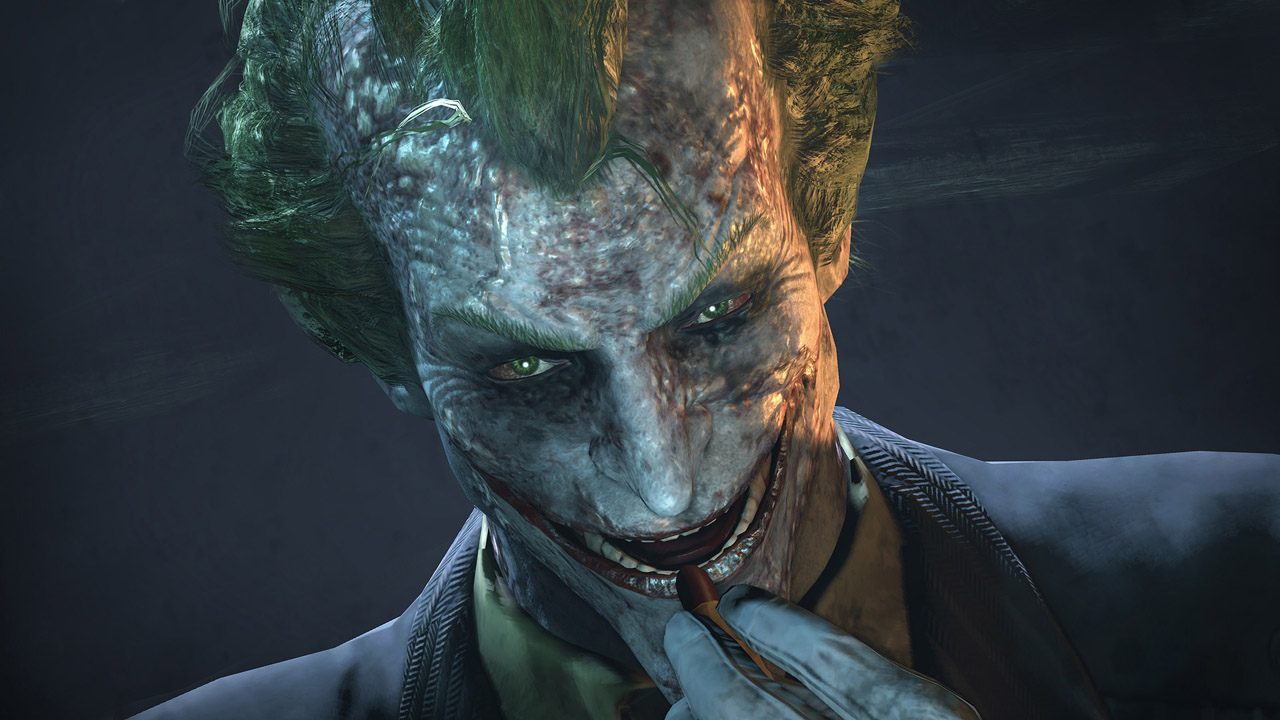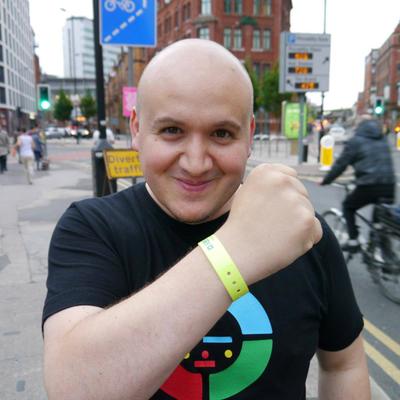In October 2011, Rocksteady released Arkham City, the sequel to the well-received Arkham Asylum, to universal acclaim.
In just under six months’ time, we’ll see the studio complete their trilogy with the highly-anticipated Arkham Knight (currently scheduled for a release in June). As we inch ever closer to the final instalment, it seems a perfect time to look back at Arkham City, and see whether or not it stands up against today’s AAA titles, what impact it has had on the industry since release, and where we hope it can go in the future.
If you’ve been living on the moon for the last five years and are unfamiliar with Rocksteady’s astonishing series, it charts the age-old battle between Batman and the Joker across a number of reinvented, yet nonetheless familiar Gotham settings (as their titles suggest – the iconic asylum takes center stage in the first, before giving way to Gotham proper in the second). The games sport a generous cast of well-known villains and heroes alike, a metric tonne of fan-pleasing references to the 80+ lore of the comics, and contain enough plot twists and turns that still make most other franchises green with envy today.
 Of course, these are characters many of us have seen before. We’ve grown up with the likes of the Penguin, Catwoman, the Riddler, and, of course, the clown prince of crime himself - the Joker. In recent years, Christoper Nolan’s film trilogy brought the caped crusader to a whole new generation of movie-goers, but before that, there was the original film series (the less said about Bamtan & Robin the better), the 90s animated show, and of course the wonderfully camp 60’s TV show. We’ve experienced so many iterations of the Dark Knight throughout the decades, that doing him justice in a video game is a tall order. Few intellectual properties are as well-known, and as beloved, as Bruce Wayne’s brooding alter-ego.
Of course, these are characters many of us have seen before. We’ve grown up with the likes of the Penguin, Catwoman, the Riddler, and, of course, the clown prince of crime himself - the Joker. In recent years, Christoper Nolan’s film trilogy brought the caped crusader to a whole new generation of movie-goers, but before that, there was the original film series (the less said about Bamtan & Robin the better), the 90s animated show, and of course the wonderfully camp 60’s TV show. We’ve experienced so many iterations of the Dark Knight throughout the decades, that doing him justice in a video game is a tall order. Few intellectual properties are as well-known, and as beloved, as Bruce Wayne’s brooding alter-ego.
It’s not as though superheroes have enjoyed much luck in the medium, after all - just look at the disaster that was Superman 64. And Batman himself hasn’t enjoyed much luck in games; sure, he’s fared better in recent years, but for every Lego Batman, there’s a Batman: Dark Tomorrow. Doing the caped crusader justice was a daunting task - one which would make lesser developers gulp and quietly decline.
But somehow, inexplicably, Rocksteady nailed it. Arkham Asylum was superb - blending Metroidvania-style exploration and hidden areas with a fantastic combat system which concealed an impressive amount of depth in its outward-facing simplicity. No-one expected much from Arkham Asylum, but it crept out of nowhere amidst exceedingly low expectations and stunned players and critics alike with intuitive combat, its reverence to the source materal, and a story which crammed in so many beloved characters that even non-fans could hardly move for a recognisable face. Surely after their first instalment there’s nothing Rockstar could have done that we hadn’t seen or done already, right?
Wrong.
Rocksteady had already proven that not only could they create a whole new style of third-person fighting, dubbed “Free Flow”, but they could make it just one aspect of a much greater whole - showcasing not just Batman’s brawn, but also his brain. Combat may well be the main focus of the Arkham games, but Rocksteady is well aware that Batman isn’t nicknamed the World’s Greatest Detective for no reason, and they explore his skills of deduction just as much as his fighting prowess. Arkham City took that to aspect and ran with it, pitting Batman’s towering intellect against a vast array of adversaries and obstacles. The Riddler Trophies are perhaps the pinnacle of Rocksteady’s achievement, a seemingly endless amount of puzzles strewn across the city, a to-do list so tantalising that you can’t help but want to cross them all off the page. Finding one of these miniature puzzles and realizing you can’t complete it yet, only to come back later fully tooled-up and claim the trophy which once eluded you, is a fantastically satisfying feeling - one that hasn’t been equalled in any video game since.
While a thoroughly British studio, Rocksteady’s games show a palpable love for a distinctly American icon - a love which permeates throughout their games and seeps from every digital pore. From the inventive puzzles and side quests  given to you by The Riddler, to the flashy but always functional gadgets of Batman, the Arkham games display a reverence for the Dark Knight that leaks out of the monitor and lodges itself firmly in your brain. And it’s all wrapped up in a gritty and creative re-imagining which takes liberties with established characters, but never so much that they feel unrecognisable. The Penguin is a wonderful cockney stereotype, Burgess Meredith’s waddling portrayal in the 60s TV show colliding with the sheer gangland brutality of the Kray twins. Catwoman’s sexuality literally purrs and she owns every scene she’s in. Mr Freeze’s heart and stoic demeanor is as cold as his body temperature. Rocksteady knows the Dark Knight, and they don’t waste any time in making sure you’re aware of it and become invested in their vision of an alternate, but altogether familiar, Gotham City: full of freaks of nature and psychopaths, where the residents daren’t venture out onto the streets of the very place they reluctantly call home.
given to you by The Riddler, to the flashy but always functional gadgets of Batman, the Arkham games display a reverence for the Dark Knight that leaks out of the monitor and lodges itself firmly in your brain. And it’s all wrapped up in a gritty and creative re-imagining which takes liberties with established characters, but never so much that they feel unrecognisable. The Penguin is a wonderful cockney stereotype, Burgess Meredith’s waddling portrayal in the 60s TV show colliding with the sheer gangland brutality of the Kray twins. Catwoman’s sexuality literally purrs and she owns every scene she’s in. Mr Freeze’s heart and stoic demeanor is as cold as his body temperature. Rocksteady knows the Dark Knight, and they don’t waste any time in making sure you’re aware of it and become invested in their vision of an alternate, but altogether familiar, Gotham City: full of freaks of nature and psychopaths, where the residents daren’t venture out onto the streets of the very place they reluctantly call home.
In many ways, Arkham Asylum felt like a prototype, a warm-up exercise by a studio testing the water for something far more grand. And as impressive as Arkham Asylum was, it was Arkham City which saw Rocksteady’s take on Batman truly come into its own.
Arkham City not only expanded on the facets first established in 2009’s Arkham Asylum; it improved on them in every conceivable way. Moving from a confined, linear environment to open-world? Check. Doubling the amount of gadgets available for Batman to use this time around? Consider it done. Improving an already slick combat system, whilst adding even more enemies to conquer in one fight? Not a problem. What made this chapter really stand out, even in today’s crowded 3rd person action genre, was the sheer amount of depth and content it contained, alongside the love and attention to detail of the source material. This ranged from brief cameos from the likes of Calendar Man (who even had special dialogue, if you played at certain times of the year), to a surreal side-mission with the Mad Hatter, to being able to control Catwoman (and Nightwing / Robin via DLC). So much content was lovingly crammed in, and presented to such a high standard, it all appears so effortless. It’s easy to forget that, before Rocksteady single-handedly set the bar for an entire genre, superhero video games were practically a joke. Mostly terrible, usually doing a great injustice to the icons who starred in them, and occupying bargain bins all over the world. Arkham Asylum changed that; Arkham City presented an intimidating challenge for any developer to follow, and has yet to be topped.
 Making effortless Batman games is something many gamers know is not always that easy, as proven by the decidedly average and divisive release of Batman: Arkham Origins - a game not developed by Rocksteady, and one which was plagued - and still is - by technical incompetence, a buggy campaign, and unimaginative design. It was a game that felt soulless; an exercise in ticking boxes, an obvious stop-gap to fill a hole on end-of-year balance sheets, and it rested too heavily on the laurels of the Arkham games which preceded it.
Making effortless Batman games is something many gamers know is not always that easy, as proven by the decidedly average and divisive release of Batman: Arkham Origins - a game not developed by Rocksteady, and one which was plagued - and still is - by technical incompetence, a buggy campaign, and unimaginative design. It was a game that felt soulless; an exercise in ticking boxes, an obvious stop-gap to fill a hole on end-of-year balance sheets, and it rested too heavily on the laurels of the Arkham games which preceded it.
Rocksteady’s original sequel, on the other hand, was very much ahead of the curve when it was released - skilfully blending seamless action with the now-standard crime scene investigation puzzles, and expanding on the formula established by the first game with a whole new set of toys and sense of grandeur - all while giving the player meaningful side missions that didn’t distract, but rather enhanced the main storyline. Its influence can still be felt today, most notably in the successful Shadow of Mordor – a game that borrowed extensively from the Free Flow combat system and which has often been described as an Arkham game dressed in Lord of the Rings clothing.
It has to be said that Arkham City is by no means perfect. The criticisms leveled at the over-reliance on Batman’s detective mode still stand, the combat is still a little too easy on anything but the hardest difficulty settings, and Rocksteady leans a little too heavily on quick-time events for comfort. And even though the move from the  claustrophobic corridors and rooms of the asylum to the open city was welcome, Arkham City is still not a truly open-world game; Gotham serves more as a hub into other levels, as opposed to feeling like a living, breathing world. And, of course, there’s the convenient (and entirely unconvincing) deus ex machina which brushes away the absence of any pedestrians like so much dust underneath a rug. Then there’s the vehicles - or rather, the lack of them. Both the Batmobile and Batwing featured (albeit briefly, and in cut-scenes) in the original game, yet neither game allowed the player to take control of them. Given the size of Arkham City’s world, and how well either vehicle could have been used to traverse it more efficiently, it seemed an odd oversight. Not to mention that the sheer feeling of empowerment granted by tearing through Gotham in the Batmobile is a power fantasy which ranks high on the bucket list of any man-child. It’s an oversight set to be rectified by Arkham Knight, however, and based on what we’ve seen so far, it will do so in a spectacular way.
claustrophobic corridors and rooms of the asylum to the open city was welcome, Arkham City is still not a truly open-world game; Gotham serves more as a hub into other levels, as opposed to feeling like a living, breathing world. And, of course, there’s the convenient (and entirely unconvincing) deus ex machina which brushes away the absence of any pedestrians like so much dust underneath a rug. Then there’s the vehicles - or rather, the lack of them. Both the Batmobile and Batwing featured (albeit briefly, and in cut-scenes) in the original game, yet neither game allowed the player to take control of them. Given the size of Arkham City’s world, and how well either vehicle could have been used to traverse it more efficiently, it seemed an odd oversight. Not to mention that the sheer feeling of empowerment granted by tearing through Gotham in the Batmobile is a power fantasy which ranks high on the bucket list of any man-child. It’s an oversight set to be rectified by Arkham Knight, however, and based on what we’ve seen so far, it will do so in a spectacular way.
Even though they didn’t quite manage to perfectly recreate every fan’s desire for a stunning adaptation of their beloved icon (at least, not yet), Rocksteady managed to raise the bar so spectacularly with Arkham City that every superhero game for the forseeable future will find itself lurking in the long shadow cast by it - including Rocksteady’s own. Its success - all the critical plaudits, a treasure-trove of awards, and no small amount of money generated - marks it not just as the best Batman game of all time, but one of the best games of all time, period.
Arkham Asylum set the mold; Arkham City recast it. Arkham Knight needs to be nothing short of Game of the Year material if it hopes to live up to the expectations and hype, and it’s a pressure that Rocksteady is no doubt feeling as they creep ever closer to next June.
If they fail? Well, we’ll always have Arkham City.




